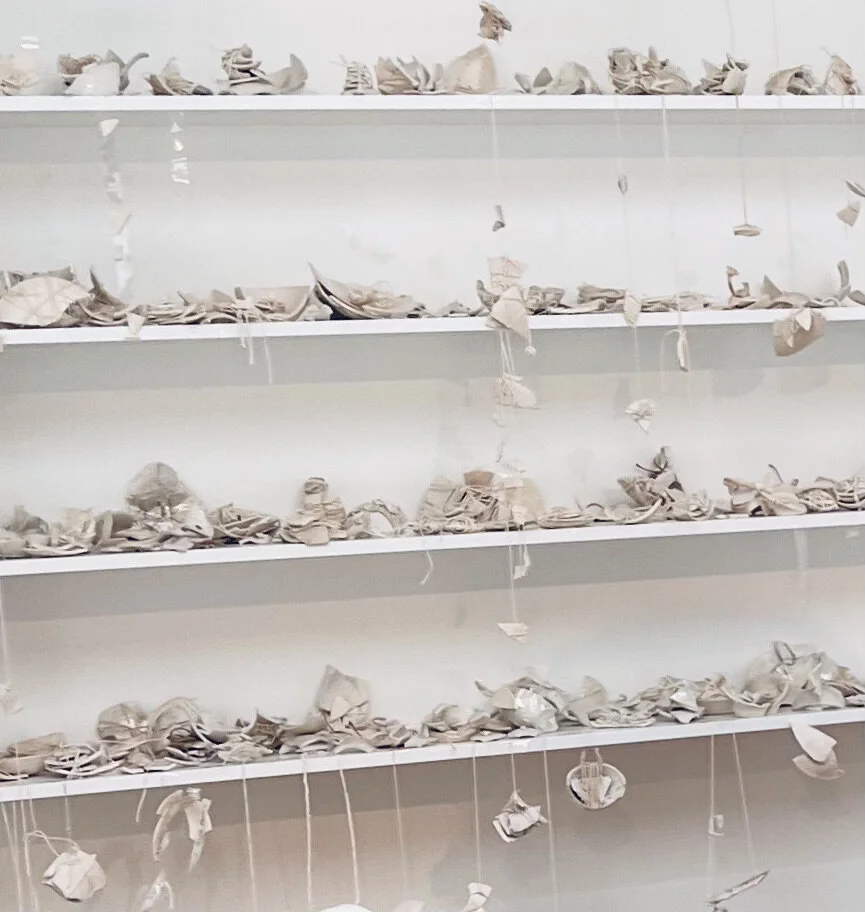Mend peace
The best way to imagine my life is as a huge 3-dimensional and mental puzzle made of fragments.
Like this Kintsugi, the charming art of repairing porcelain with gold mending. Maybe without the gold, as my mending is instead some clumsy trivial conceptual fabric and the repairing doesn’t carry this fabulous beauty of the breakage. Incongruous piece of living, clumsily put together, like memories of many different people, an astonishing lack of integration.
Assembling and dismantling something, making new things by fragments of things that could be beautiful or uncanny is a strong symbolism of life. Life is not linear nor uniform, nor predictable - we are made of pieces.
The way we remember our life changes and is influenced by our current state, our fluctuating ideas and beliefs. A memory today cannot be the same as the same memory tomorrow.
And life seems different to the one who lives it and all the others - so life is an assembly, a puzzle, a mosaic of our and others’ images and impressions—a fluctuating magic picture.
Anyway, the associations that can begin from a fragment are unmeasurable far beyond postmodernism. Fragments are our indicative signs for a long past; even truth cannot be considered but as fragments. A fragment presupposes a break, a trauma or a loss; a fragment is a memory or an alternated identity, a monument or garbage. And in any case, every breakage signifies something new, a new image, a new element, an untold story.
But how do you mend a fragmented soul? How can gold be the joinery when it comes to the psyche?
Yoko Ono’s artistic view, bearing the deep eastern care for soul comforting and her strong Fluxus inspiration, looks at fragments not as a breakage indication but as pieces for creating something new. Her Mend piece (1968), the interactive work presented in White Chapel Gallery, is all about healing with a deep acknowledgement that in the case of the soul, the mending doesn’t have to be gold. It can be with tape and rope, and glue. So inviting the audience to use broken white cups’ fragments and make their own sculpture becomes a healing ceremony, for them, for the next visitors and the past. Every piece is perfect, like the pebbles on the beach; every fragment can have beauty, value and a place in an artwork. “You might think you’re just mending a cup, but you’re actually mending something within you.”
The most exciting fact is that most of all those improvising mini-sculptures have nothing to do with the initial cup; they take all kinds of different shapes and forms. A breakage opens a road to innumerable possibilities.
In 1972 Yoko Ono performed Mend Piece with John Lennon for five days in a TV show. They mended broken white porcelain cups with glue and twine, a piece every day.
Their mending didn’t work ultimately; they actually separated in 1973 for a while but got back together and remained so until John’s assassination.
(While at White Cube last Monday, I mended a piece into a fragile porcelain woman made of cup’s fragments and rope. Like any kind of non-assessable impulsive creative act, it gave me peace and optimism, a small additional percentage of strength for coping with a difficult week. I am kind of feeling sorry I didn’t take a picture of it.)
